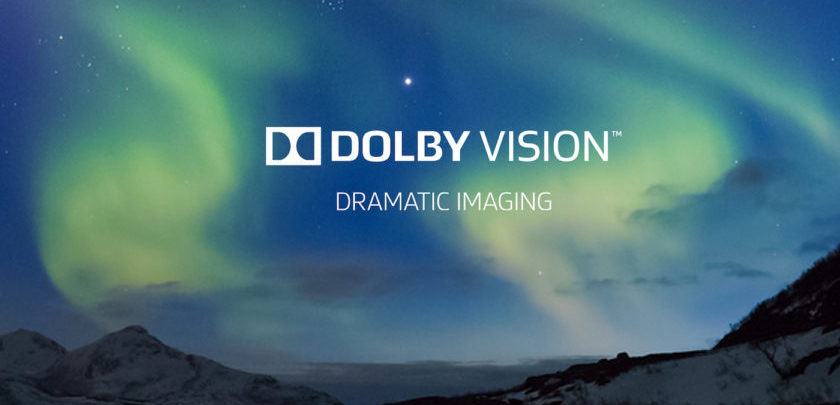M+E Connections

Dolby CEO: Company’s ‘Off to a Strong Start’ in 2018 Behind Continued Atmos, Vision Momentum
Story Highlights
Strong momentum for Dolby Atmos and Dolby Vision have continued into 2018 and played a key role in the stronger revenue Dolby was able to report Jan. 24 for the first quarter (ended Dec. 29), according to Kevin Yeaman, its president and CEO.
“We’re off to a strong start to 2018,” he told analysts on an earnings call. Dolby Vision and Dolby Atmos momentum were “once again on display at CES this year, as our partners highlighted Dolby experiences across the show floor” earlier this month and Dolby is “seeing widespread industry adoption” of Vision and Atmos, he said, adding those experiences are also now “moving to the mainstream.”
Both Sony and LG announced new Dolby Atmos sound bars at CES, he noted. Sony’s offerings include a new line of mainstream Dolby Atmos sound bars, including the $599 HT-X9000F.
“What’s significant about these new sound bars is that they appeal to a larger consumer base with price points starting below $600,” Yeaman told analysts.
The number of TVs featuring Dolby Atmos is also growing, he pointed out. Last year at CES, LG announced its first Atmos TV, and that marked the first time consumers could get a combined Dolby Vision and Dolby Atmos experience in one device, he said. This year at CES, LG said it would expand that experience to all its 2018 OLED and Super UHD TVs, he noted. At the same time, Chinese TV makers TCL and Skyworth announced they are bringing Dolby Atmos to TVs this year, he said.
The first PCs featuring Dolby Vision were also announced, he said, noting they’re part of Lenovo’s new ThinkPad X1 line. There’s also an expanded number of TVs that will incorporate Dolby Vision, he said, adding Dolby now has more than 10 TV partners, all of whom announced 2018 Dolby Vision TVs. “Many are expanding Dolby Vision into the mainstream lines with price points starting as low as $500,” he said.
Also at CES, there was further adoption announced of Dolby Vision in Ultra High-Def (UHD) Blu-ray players, with Sony and Panasonic announcing their first such players offering the feature, joining LG, Phillips and OPPO, he said, adding: “Just two years ago, we launched with a few TV partners and, since then, we’ve expanded the Dolby Vision experience” into smartphones, tablets, Dolby multichannel amplifiers (DMAs), set-top boxes and now PCs.
Strides also continued to be made for Dolby Atmos and Dolby Vision on the content front, he said, pointing to support from Apple, Netflix and Tencent as examples. He noted that the latter recently started streaming Dolby Vision content. There are now more than 200 movies available in Dolby Vision on iTunes, up from 100 in the prior quarter, and Netflix now has over 200 hours of original content in Dolby Vision, he said. Hollywood studios including Disney, Lionsgate, Paramount, Sony Pictures, Universal and Warner Brothers all support Dolby Vision and Dolby Atmos content for the home, and “we continue to expand beyond premium movie and TV content to gaming and live broadcast” globally, he said, noting Comcast will be broadcasting the upcoming Winter Olympic Games in Dolby Atmos.
Dolby recently added a few new over-the-top (OTT) partners to its roster, including overseas in Europe, he said. In video games, meanwhile, there are now six Atmos games available for the Microsoft Xbox One, including Ubisoft’s “Assassin’s Creed Origins,” Square Enix’s “Final Fantasy 15” and “Battlefield 1” from Electronic Arts, which was recently updated to add support for Dolby Vision, he said.
Strides also continued to be made by Dolby Cinema, he went on to say, noting Dolby added “about 20 screens this quarter, bringing the total to 133 Dolby Cinemas open around the world with over 360 committed.” Dolby is “on track to open about as many screens this year as we did in fiscal 2017,” he said. The “content pipeline” for Dolby Cinema also “continues to grow, with about 130 titles in Dolby Vision and Dolby Atmos released or announced with participation from every major studio,” he said.
Dolby reported first-quarter revenue grew to $287.8 million from $266.3 million a year earlier. Of the Q1 revenue this time, $258 million came from licensing and $30 million came from products and services, CFO Lewis Chew told analysts. Licensing revenue exceeded the high-end of Dolby’s forecast by more than $20 million, he noted, pointing out the company raised its full year guidance for the current fiscal year. Dolby now expects to report revenue of $1.15 billion to $1.18 billion for fiscal 2018.
Despite reporting a loss of $81.6 million (80 cents a share) vs. a profit of $53.4 million (51 cents a share), Dolby shares were up more than 8% at $69.58 in afternoon trading Jan. 25.
Broadcast represented about 40% of total licensing in the first quarter, with revenue down about 4% from Q1 last year, Chew said. Mobile devices accounted for about 23% of total licensing in Q1, with revenue soaring 150%, driven in part by higher revenue from tablets, he said. Consumer electronics represented about 11% of total licensing in Q1, with revenue up 3%, driven in part by higher volumes in DMAs and sound bars, he said. PCs accounted for about 10% of total licensing in Q1, but revenue was down about 24%. Product revenue in Q1 was about $5 million lower than what Dolby projected, “mainly because some of our Cinema products didn’t ramp as quickly in Q1 as we had anticipated,” Chew said.









